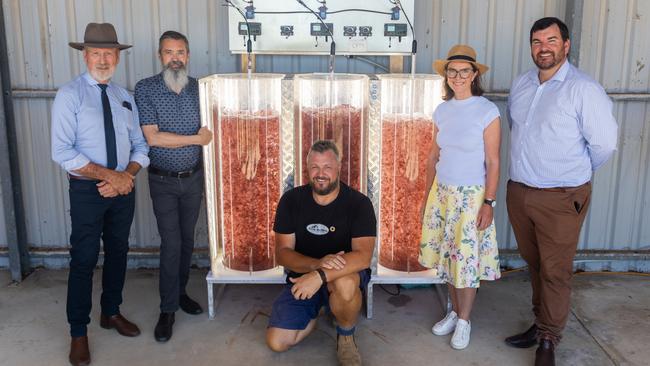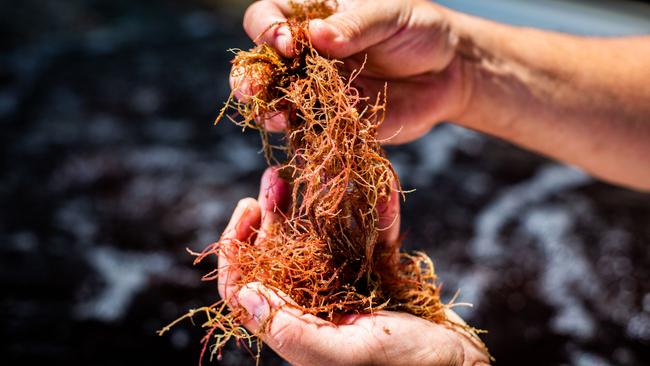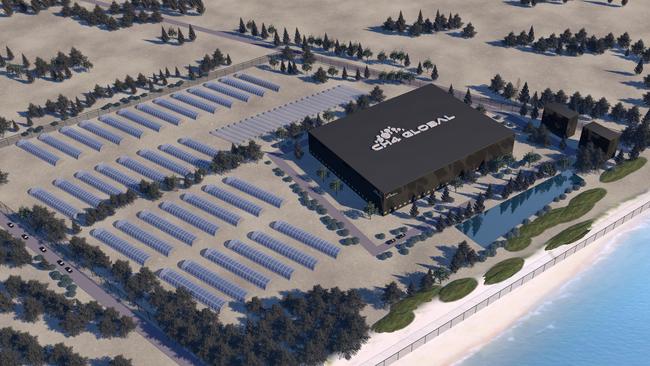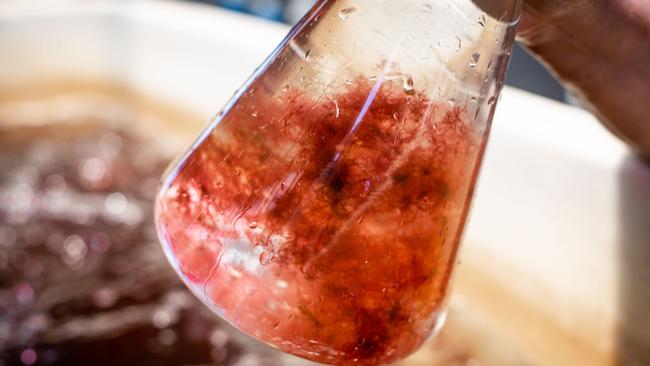Construction starts on EcoPark at Louth Bay to convert seaweed into Methane Tamer, to reduce carbon dioxide
Construction has begun on a $20m seaweed processing plant near Port Lincoln, part of a global company’s massive effort to reduce carbon dioxide entering the atmosphere.
SA News
Don't miss out on the headlines from SA News. Followed categories will be added to My News.
Construction has started on a $20m seaweed production plan on the Eyre Peninsula that’s part of an audacious aims to cut carbon dioxide entering the atmosphere by one billion metric tons.
EcoPark at Louth Bay will grow and process a red seaweed native to SA called asparagopsis, which drastically reduces methane emissions from cows by up to 90 per cent. It will create 20 jobs and more are expected.
Feedlot cows are notorious for methane production, with each one producing approximately 32kg of methane over a 100-day feedlot period.
And methane is about 28 times as potent as carbon dioxide at trapping heat in the atmosphere.
Built by CH4 Global, the state-of-the-art EcoPark, 23km from Port Lincoln will grow the seaweed and convert it into Methane Tamer, a feed additive for cows across the world.


The Louth Bay EcoPark will include a seedling hatchery, in-land growing and harvesting and drying technology, CH4 Global founder and Chief Executive Dr Steve Meller said.
“CH4 Global has committed to eliminating one billion metric tons of carbon dioxide equivalent emissions and reach 150 million cattle by 2030 through our local and international partnerships with feedlots and farmers. The Louth Bay EcoPark is an essential step for us along that journey as we scale up our operations,” Dr Meller said.
The first commercially produced Methane Tamer was delivered earlier this week to CirPro for use at its partner feedlot HB Rural, south of Port Pirie.
CirPro Australia CEO Reg Smyth said using the seaweed product would reduce his company and CH4 Global were committed to sustainable protein production, reducing methane and animal welfare.


“That means for 100 cattle in a feedlot for 100 days, we will eliminate the equivalent greenhouse gas emissions of approximately 100 trips between Sydney and Perth driven by an average petrol-powered passenger vehicle, or 45,000 kilograms of coal burned,” Mr Smyth said.
“Another way of looking at it is this reduction is equivalent to carbon sequestered by 1500 tree seedlings grown for 10 years. Whatever way you view it, this is significant and direct GHG mitigation.”
CirPro plans increase usage of Methane Tamer to 10,000 cattle daily by early 2025.
Dr Meller said CH4 Global had committed to preventing one gigatonne of CO2 emissions by 2030, which means it needs to reach 150 million cattle – 10 per cent of the world’s total – by 2030.
“The Louth Bay EcoPark is an essential step for us along that journey as we scale up our operations,” Dr Meller said.
The production plant would create ongoing jobs and support nearby communities, he said.
“There will be economic benefits for Eyre Peninsula and for South Australia as a whole, and while that’s important, we’re also focusing on how we can bend the climate curve by supporting farmers around the world to reduce emissions through asparagopsis.”
CH4 Global has production facilities at Arno Bay, Lonsdale in Adelaide’s south, and in New Zealand.





